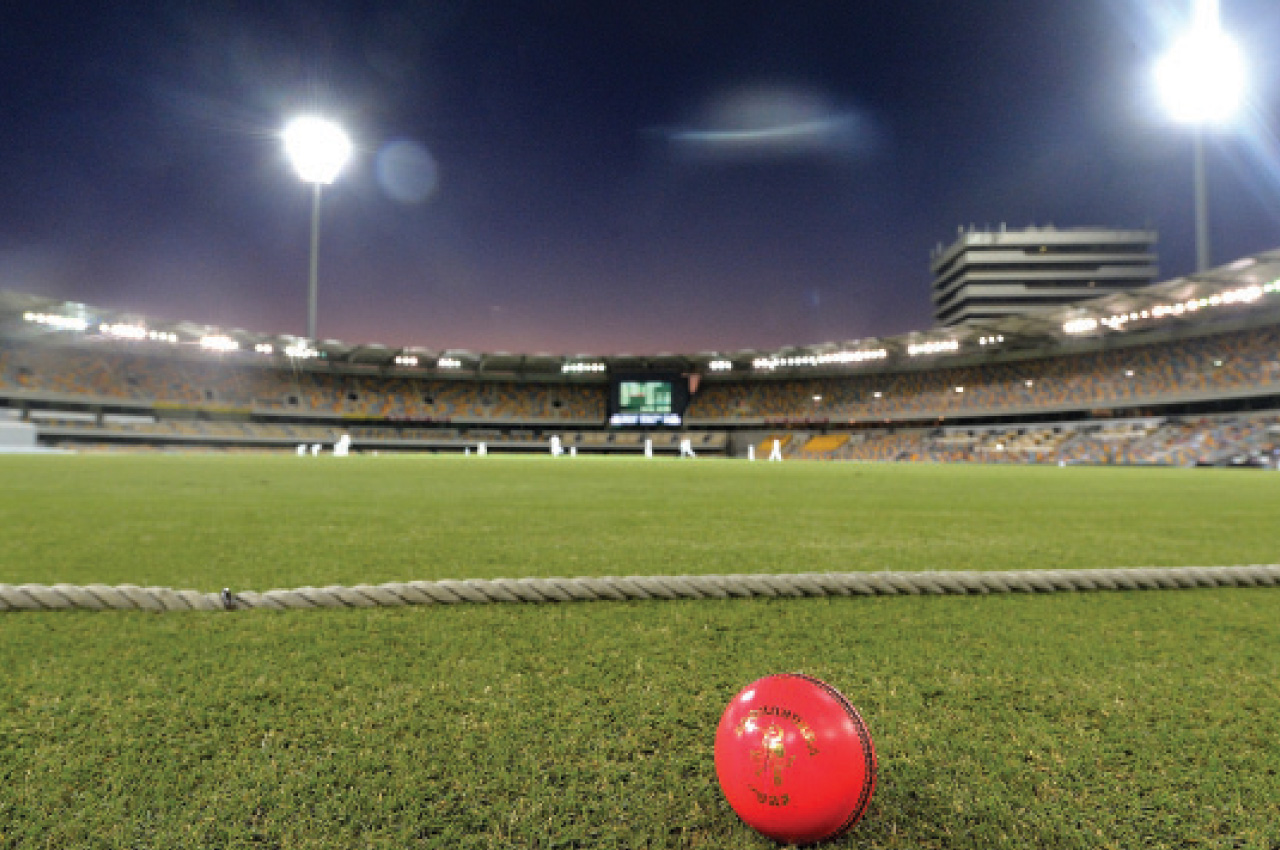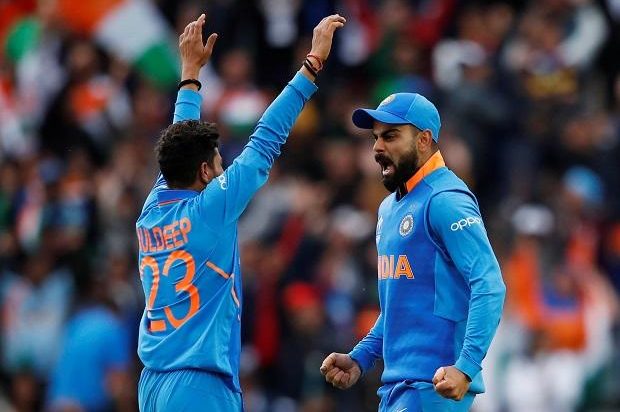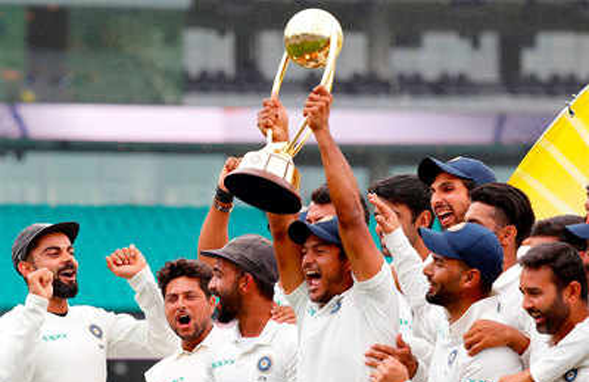By Shantanu Srivastava
 “Its red, round and weighs about five ounces,” said former South Africa skipper Shaun Pollock to Aussie stalwart Ricky Ponting after the latter had played and missed a couple of balls. We won’t get into Ponting’s riposte- the exchange itself finds a pride of place in cricket’s sledging folklore- but never since did Pollock’s explanation appear more apt. The world around us is changing. Things are apparently moving fast. These are, I am told, fast times. Fast money, fast women, fast growth, fast life, fast cricket. For a twentieth century aficionado, these are also strange times. A five-day game under floodlights? A five-day game with a pink ball? The purist in me rebels. The realist in me reasons. The fan in me cringes. The journalist in me struggles for objectivity. Is it good? Is it needed? Is it too much? Apparently, similar questions were raised when white balls, coloured clothing, one-day cricket, and later Twenty20 came into being. Talks about crass commercialisation robbing the game of its innate charm surfaced. None of those changes, however, threatened to change the dynamics of the game as much as pink ball does. And the reasons are both technical and emotional.
“Its red, round and weighs about five ounces,” said former South Africa skipper Shaun Pollock to Aussie stalwart Ricky Ponting after the latter had played and missed a couple of balls. We won’t get into Ponting’s riposte- the exchange itself finds a pride of place in cricket’s sledging folklore- but never since did Pollock’s explanation appear more apt. The world around us is changing. Things are apparently moving fast. These are, I am told, fast times. Fast money, fast women, fast growth, fast life, fast cricket. For a twentieth century aficionado, these are also strange times. A five-day game under floodlights? A five-day game with a pink ball? The purist in me rebels. The realist in me reasons. The fan in me cringes. The journalist in me struggles for objectivity. Is it good? Is it needed? Is it too much? Apparently, similar questions were raised when white balls, coloured clothing, one-day cricket, and later Twenty20 came into being. Talks about crass commercialisation robbing the game of its innate charm surfaced. None of those changes, however, threatened to change the dynamics of the game as much as pink ball does. And the reasons are both technical and emotional.
Technical first. The first ever pink-ball Test, played between Australia and New Zealand in November last year, ended in three days, with seamers ruling the roost. The pink ball swung under lights, and the fast men extracted movement both off the seam and in the air. The Test drew huge crowd, and the Board of Control for Cricket in India (BCCI), never one to miss out on fast cash, decided this was it.
Duleep Trophy, abandoned last year thanks to a packed international schedule, came out of drawer with a renewed format and an important caveat- pink ball. The zonal system was done away with and three teams- India Blue, India Red and India Green- were pitted against each other to test waters. By the time the first match between Yuvraj Singh-led India Red and Suresh Raina’s India Green ended, a strange inference arrived. Despite a green track and lush outfield, the pink ball didn’t swing alarmingly, though it did move off the seam in the last sessions under the artificial lights. Also, due to the high gloss and excellent outfield, there was no reverse swing. The most curious outcome was the way it turned things around for the wrist-spinners. Little known chinaman bowler Kuldeep Yadav and leg-spinner Sheyas Gopal got appreciable dip and drift under lights, and even the set batsmen had trouble sighting the googly.
Tournament’s second-highest scorer Mayank Agarwal told this writer that even if the batsmen picked the ‘wrong one’ from the hand, they were unable to read the revolutions in the air as the black seam became increasingly difficult to pick at night. Agarwal fell to Yadav after dominating the attack during the day, but conceded, almost as an afterthought, that it was also a matter of getting used to the ball.
“Wrist-spinners certainly get help under lights. The pink ball dip and drifts, and also skids once the floodlights are switched on, though there is not much turn,” Yadav said.
“However, I like bowing with red ball. I don’t want to be known as a bowler who got wickets only because the ball and conditions were helpful.”
Duleep Trophy final was played on a bone-dry track, purportedly to give Test regulars some match-practice ahead of the New Zealand series currently underway. The spinners were expected to do well on a brown pitch that had begun to crack on the first day itself. As it turned out, none, apart from Ravindra Jadeja, who revels on such tracks, could cause any serious trouble to the batsmen in the first two sessions.
Former spin great Erapalli Prasanna told me he was “disappointed” and “worried.” “If they can’t spin the ball on this track, I am really worried. I am disappointed with the spinners. Looks like we don’t have good reserve spinners,” he said.
Another problem with the pink-ball, day-night Tests is the fact that cricket essentially is a winter sport in India. Barring Indian Premier League (IPL) and some largely inconsequential tours, there’s not much cricket till September. By the time the home season arrives, its winters, which means low visibility and high dew post sunset. This turns the entire pink-ball experiment on its head. Will the crowds still be willing to sit through a Test on chilly nights? Will the players be comfortable playing in smog, and how will they tackle poor visibility? How will the off-spinner, who is anyway struggling because of the less pronounced seam, grip the wet ball?
Now, the emotional reason. Before he had faced a single ball in Duleep Trophy, India Blue captain Gautam Gambhir insisted on having the right mindset to tackle the pink-ball challenge. Gambhir went on to lift the trophy, besides reeling off a mountain of runs. However, he was of the view that the game’s purest format didn’t need tinkering.
“I am a traditionalist, and I feel Test cricket should be played with red ball. You can try these things in ODIs and T20s, but at least the oldest form of the game should be left alone. Just because you are not able to bring the crowd to Test matches doesn’t mean that you should start playing it in the evenings. A 9am start offers an entirely different set of challenges,” he said.
Former India skipper Bishen Singh Bedi went as far as calling the pink-ball experiment a “gimmick.”
“Will they ever play Ashes with a pink ball? Why did they abandon the idea after playing just one Test match? England-Pakistan Test series drew large crowd on every day. You need quality to bring people to stadiums. India does not need pink-ball gimmick,” he said.
Gambhir and Bedi are not off the mark. While innovations are welcome to make the game more exciting- and profitable- the essential ethos must remain sacrosanct. What after all, would be the first session of a Test match without the new ball swerving away or cutting into the batsman? How do you fancy a fifth-day afternoon session without the chatter of close-in fielders, ball spinning, kicking, spitting off the surface, testing the basics on which the edifice of batsmanship are formed? Crowds avoid Test cricket not because it is played with a red ball, but because cricket itself is becoming increasingly monochrome. Give them high-quality cricket, even contest, decent seats, and then gauge if they are really interested. If they still don’t care, whose loss it is?
PS: For those who are interested, Ricky Ponting hit Pollock for a boundary the next ball. “You know what it looks like, now go find it,” is what he is learnt to have told Pollock.









